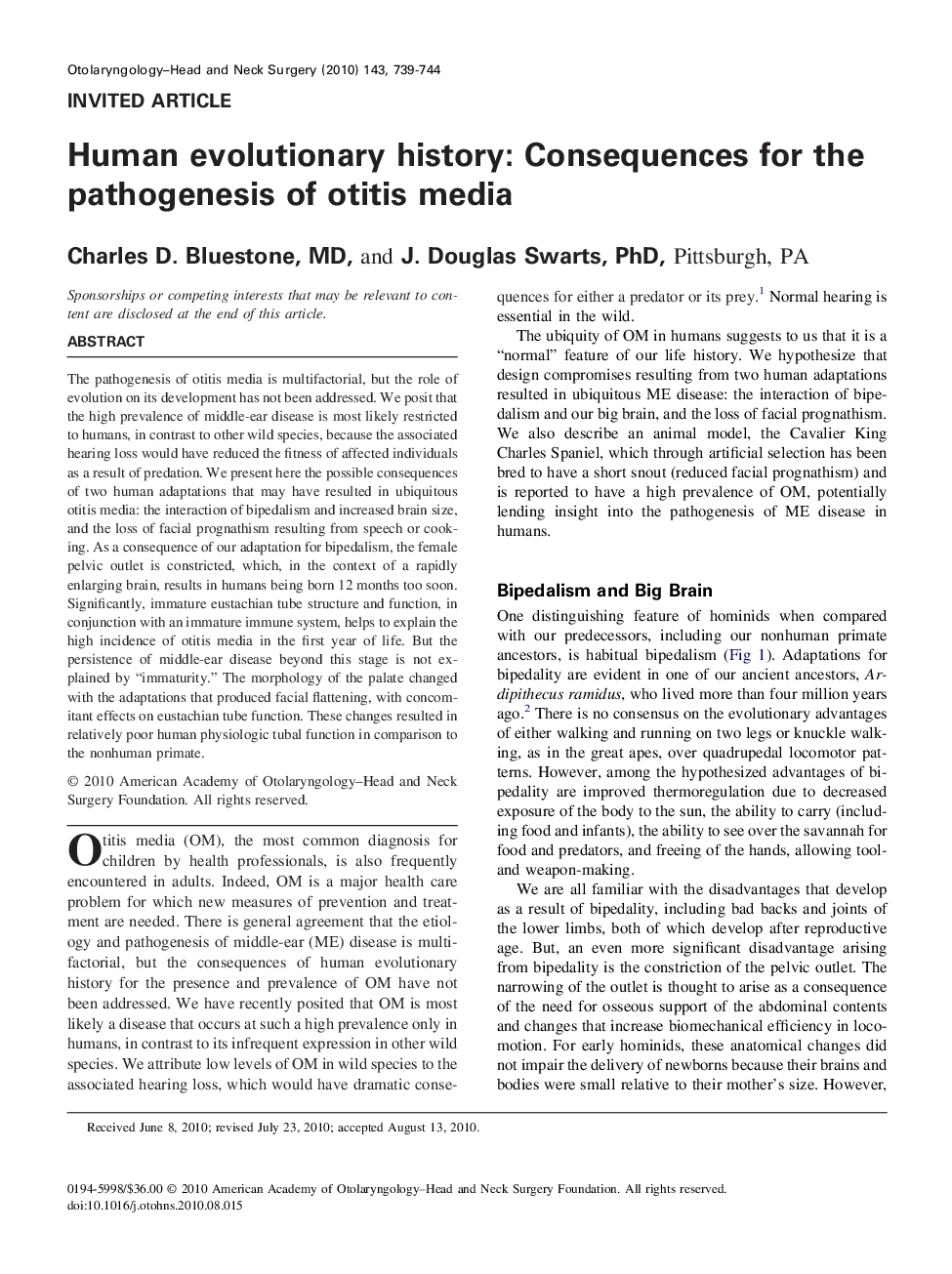| کد مقاله | کد نشریه | سال انتشار | مقاله انگلیسی | نسخه تمام متن |
|---|---|---|---|---|
| 4124707 | 1606412 | 2010 | 6 صفحه PDF | دانلود رایگان |
عنوان انگلیسی مقاله ISI
Human evolutionary history: Consequences for the pathogenesis of otitis media
دانلود مقاله + سفارش ترجمه
دانلود مقاله ISI انگلیسی
رایگان برای ایرانیان
موضوعات مرتبط
علوم پزشکی و سلامت
پزشکی و دندانپزشکی
بیماری های گوش و جراحی پلاستیک صورت
پیش نمایش صفحه اول مقاله

چکیده انگلیسی
The pathogenesis of otitis media is multifactorial, but the role of evolution on its development has not been addressed. We posit that the high prevalence of middle-ear disease is most likely restricted to humans, in contrast to other wild species, because the associated hearing loss would have reduced the fitness of affected individuals as a result of predation. We present here the possible consequences of two human adaptations that may have resulted in ubiquitous otitis media: the interaction of bipedalism and increased brain size, and the loss of facial prognathism resulting from speech or cooking. As a consequence of our adaptation for bipedalism, the female pelvic outlet is constricted, which, in the context of a rapidly enlarging brain, results in humans being born 12 months too soon. Significantly, immature eustachian tube structure and function, in conjunction with an immature immune system, helps to explain the high incidence of otitis media in the first year of life. But the persistence of middle-ear disease beyond this stage is not explained by “immaturity.” The morphology of the palate changed with the adaptations that produced facial flattening, with concomitant effects on eustachian tube function. These changes resulted in relatively poor human physiologic tubal function in comparison to the nonhuman primate.
ناشر
Database: Elsevier - ScienceDirect (ساینس دایرکت)
Journal: Otolaryngology - Head and Neck Surgery - Volume 143, Issue 6, December 2010, Pages 739-744
Journal: Otolaryngology - Head and Neck Surgery - Volume 143, Issue 6, December 2010, Pages 739-744
نویسندگان
Charles D. MD, J. Douglas PhD,